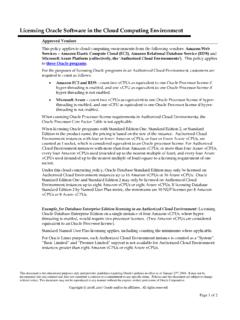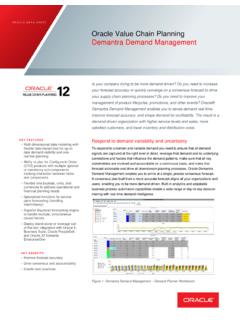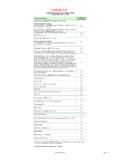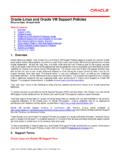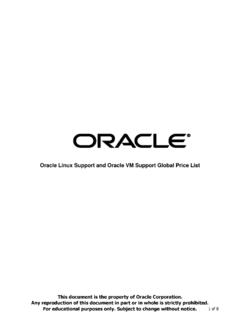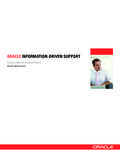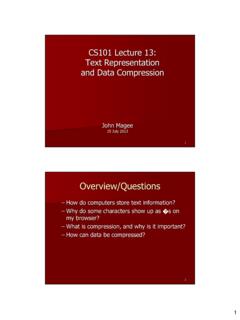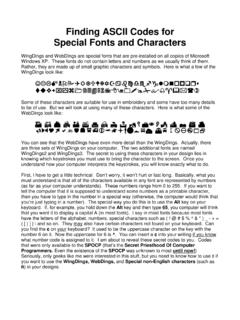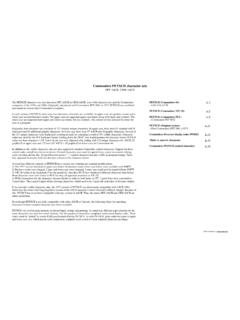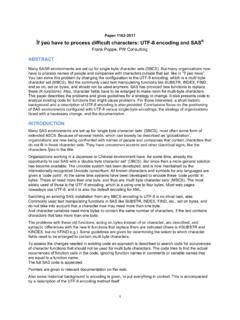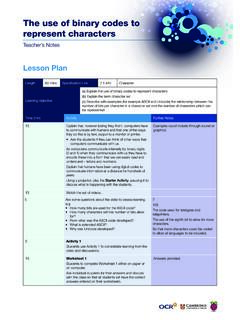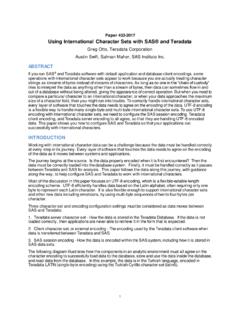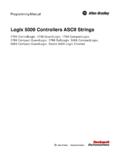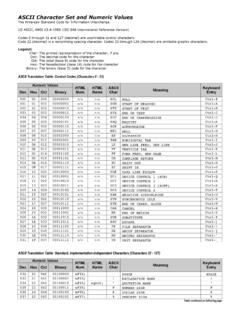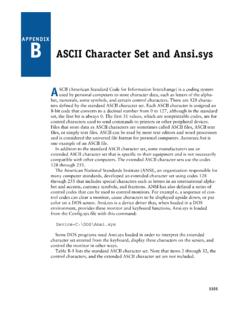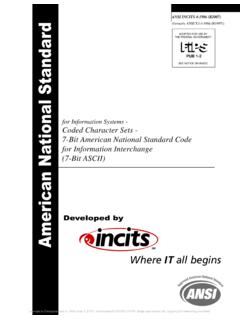Transcription of Character Set Migration Best Practices - Oracle
1 Character Set Migration best Practices $Q 2 UDFOH :KLWH 3 DSHU October 2002 Server Globalization Technology Oracle Corporation Introduction - Database Character Set Migration Migrating from one database Character set to another requires proper strategy and tools. This paper outlines the best Practices for database Character set Migration that has been utilized on behalf of hundreds of customers successfully. Following these methods will help determine what strategies are best suited for your environment and will help minimize risk and downtime.
2 This paper also highlights Migration to Unicode. Many customers today are finding Unicode to be essential to supporting their global businesses. Oracle provides consulting services for very large or complex environments to help minimize the downtime while maximizing the safe Migration of business critical data. Why migrate? Database Character set Migration often occurs from a requirement to support new languages. As companies internationalize their operations and expand services to customers all around the world, they find the need to support data storage of more World languages than are available within their existing database Character set.
3 Historically, many legacy systems required support for only one or possibly a few languages; therefore, the original Character set chosen had a limited repertoire of characters that could be supported. For example, in America a 7-bit Character set called ascii is satisfactory for supporting English data exclusively. While in Europe a variety of 8 bit European Character sets can support specific subsets of European languages together with English. In Asia, multi byte Character sets that could support a given Asian language and English were chosen.
4 These were reasonable choices that fulfilled the initial requirements and provided the best combination of economy and performance. Today these choices are a barrier to supporting the global market necessitating Character set Migration . Supporting new languages is not the sole motivation for Character set Migration . Cultural changes can also prompt support for a particular Character or set of characters, such as the demand for the Euro Symbol throughout the world. Sometimes a changing operating environment is the deciding factor on the need to migrate Character sets.
5 Interoperability with environments which handle a different and non-compatible Character set to the database Character set can force the need for Migration . Examples of this are databases that are exposed primarily to Unicode based Java clients or simply exposed to the World Wide Web where international users are providing Character data for database storage. Even an English Windows client using code page 1252, supports many characters ( ) outside the repertoire of an ascii database thus forcing the need for Character set Migration .
6 Another likely reason why Migration may be required is consolidation of data stores in different Character sets. An example of this could be two separate data stores, one holding French data and another holding Russian, that could be combined to a single data store in a Character set which could represent both languages. Choosing your new Character Set Several Character sets may meet your new language requirements. However, you should consider future language requirements as well when you choose the new database Character set.
7 If you expect to support additional languages in the future, then choose a Character set that supports those languages to prevent the need to migrate again. The database Character set is independent of the operating system because Oracle has its own globalization architecture. The only restriction is that ascii -based platforms do not support EBCDIC-based Character sets and vice versa. For example, on an English Windows operating system, you can create and run a database with a Japanese Character set.
8 However, when the client application accesses the database, it must be able to support the database Character set with appropriate fonts and input methods. For example, you cannot directly insert or retrieve Japanese data on the English Windows operating system without first installing a Japanese font and input method. If you choose a database Character set that is different from the Character set of the client application, then the Oracle database must convert the application Character set to the database Character set.
9 For best performance, choose a Character set that avoids Character set conversion and uses the most efficient encoding for the languages desired. Single-byte Character sets result in better performance than multibyte Character sets, and they also are the most efficient in terms of space requirements. However, neither of these performance considerations may be practical as single-byte Character sets limit how many languages you can support. Avoiding conversion may be impossible because some environments have multiple clients using different Character sets accessing the same database.
10 Choosing the right Character set requires consideration of all the client applications that will be accessing the database. The database Character set should have equivalent characters in its repertoire otherwise data loss can occur. For example, if you are converting from a client with Character set A to the database with Character set B, then the destination Character set B should be a superset of A. Oracle will convert any characters that are not available in Character set B to a replacement Character that is often specified as a question mark or as a linguistically related Character .
